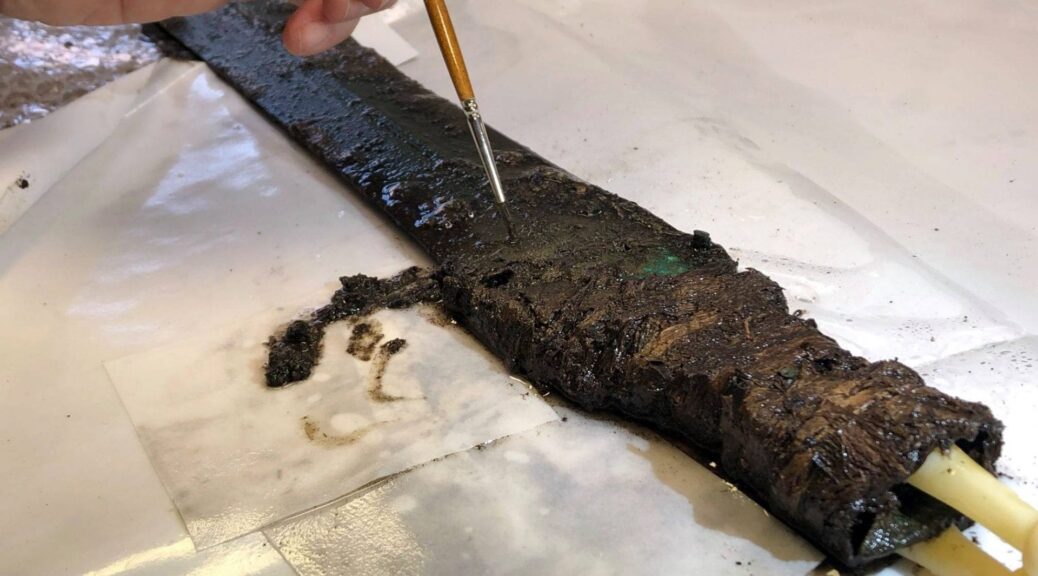Archaeologists Discover “Unique” Ceremonial Bronze Age Sword in Denmark
In the village of Håre on the Danish island of Funen, archaeologists uncovered a rare Bronze Age ritual sword. The sword dates from Phase IV of the Bronze Age, about 3,000 years ago, making it an incredibly rare discovery. What makes it much more impressive is that it is completely preserved, from bronze blade to wood grip.
Even the plant fibres it was wrapped in are extant.
The site was excavated as part of a year-long project to survey the 37-mile-long route of the Baltic Pipe gas pipeline.

Odense City Museums archaeologists were on the last leg of their excavations in west Funen when they discovered the remains of an ancient settlement where the sword was ritually deposited 3,000 years ago.
The swords were removed to the Odense City Museums for cleaning and conservation in controlled conditions. Because of the diversity of materials used in its construction, the sword had to be dismantled to see to the different preservation needs of each piece.
The fibre grip winding, which may be bast from linden wood, was unravelled and the wood and horn components separated from the metal of the blade. Samples were taken to identify the materials.

The sample from the plant fibre will be radiocarbon dated to determine when the sword was made.
The sword weighs almost three pounds (1.3 kilos), a large and very expensive amount of bronze to secure at that time. The grip was cast together with the blade shaft of the sword and covered in wood and antler/bone for a comfortable hold.
The metal was likely imported from Central Europe and then crafted by a local blacksmith. The sample from the bronze alloy of the sword will be tested to identify its exact composition and its source location.

When conservation and study are complete, conservators will reassemble the sword and put it on public display, probably at the Odense Møntergården museum which has permanent exhibits on the ancient history of Funen.
